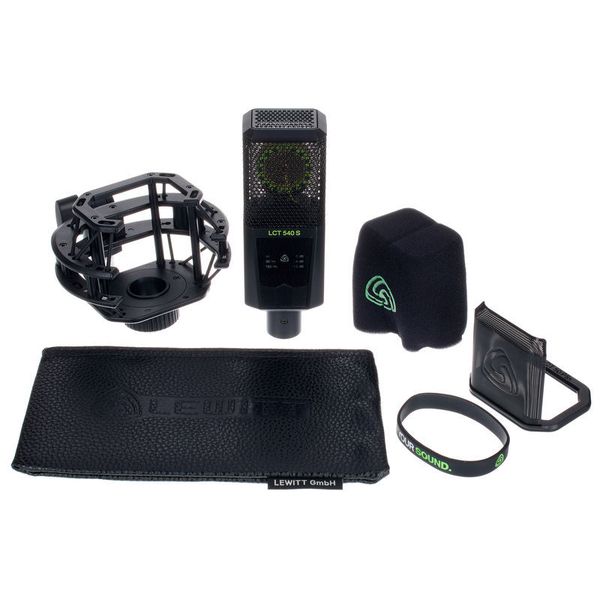I got two of these microphones to be able to record extremely quiet and delicate sounds in stereo with electrical noise not becoming a problem. I have tested the Lewitt LCT 540S against other notably quiet large diaphragm condenser microphones, such as the AKG C414 XLS and the Neumann TLM103, and the Lewitt still has an edge in critical situations. I haven't tested it against a Rode NT1 which would be an obvious challenger.
Typically it is the microphone and not the preamp that is introducing noise when using sensitive condenser mics, but a mic preamp with an EIN of -127 dBu or better should be used. The Lewitt LCT 540S also has a higher sensitivity than most other mics is in its class so you won't need to raise the preamp gain quite so high anyway. The specifications Lewitt provide in the documentation and on their website are extremely rich and they seem extremely approachable, helpful and innovative as a company.
What you do quickly realise as you amplify very quiet sounds is that it is environmental noises - distant central heating, air conditioning, neighbours talking, distant traffic, the buzzing of a dimmer switch that become the noise problem so it becomes necessary to address the recording environment - improve isolation, turn off machines, record late at night - in order to fully exploit this mic's potential.
It is important to anticipate the limitations of this mic, not due to its quality but simply due to physics. A 1-inch large diaphragm is never going to be as responsive to dynamic transients and very high frequencies and ultrasonic frequencies as a small diaphragm mic, but then a small diaphragm mic will always have more self noise, again due to physics. For ultrasonic frequencies and very high frequency detail I might still prefer my Sennheiser 8000 series mics. When pitching sounds down the Lewitt sounds duller than the Sennheiser SDCs.
The Lewitt comes in a virtually bomb-proof case. Thick foam padding in the case saves the mic from shocks if it takes a tumble while in its case.
It comes with a plastic and elastic shock mount which fulfils its main job but the hinge is sometimes hard to tighten sufficiently to prevent the mic from drooping. I'm wary of tightening it to the point where it breaks. A less smooth type of plastic might have helped this. The clutch that grips the base of the mic is also a little hard to find the optimal tightness with - just take care and give the mic a little test tug before inverting it. The first shock mount I received with one of the mics was rather crooked on account of the elastics being unevenly fitted. but Lewitt were kind enough to send me a new one (along with pens, stickers and wrist bands) when I pointed this out to them.
I actually bought a couple of Lewitt DTP 40 MTS microphone mounts which work well with the 540S and are simpler and firmer than the included shock mount, albeit without the suspension. They help with positioning the mics in tight spaces or setting up an XY configuration. Perhaps Lewitt could have included these as an alternative mounting option in the 540S set.
The 540S takes a second to be ready after applying phantom power as it goes through a short boot up procedure but in practice I have found it to be completely reliable and free of pop, crackles, roars etc that can sometimes be produced by moisture on the capsule. I haven't used them outdoors yet though.
Other nice things included are the magnetic mesh pop shield and a foam windshield.
I don't really use the pads or highpass filters on the mic very much. I occasionally use a highpass filter when recording voiceover or to suppress proximity effect when extreme close miking. I haven't used the key-lock or clipping history functions yet and I'm not recording sounds loud enough to necessitate the use of the pads, but it's nice to have them there.
I used one to record some female vocals and did find it a little over responsive to sibilants - this is definitely a modern FET mic, but at the same time it sounds more refined in the upper frequency register than most lower-priced large diaphragm condensers.
In conclusion, I certainly recommend this mic for the recording of soft sounds with the absolute minimum of microphone self noise. The shock mount has good and bad points in my opinion.






































